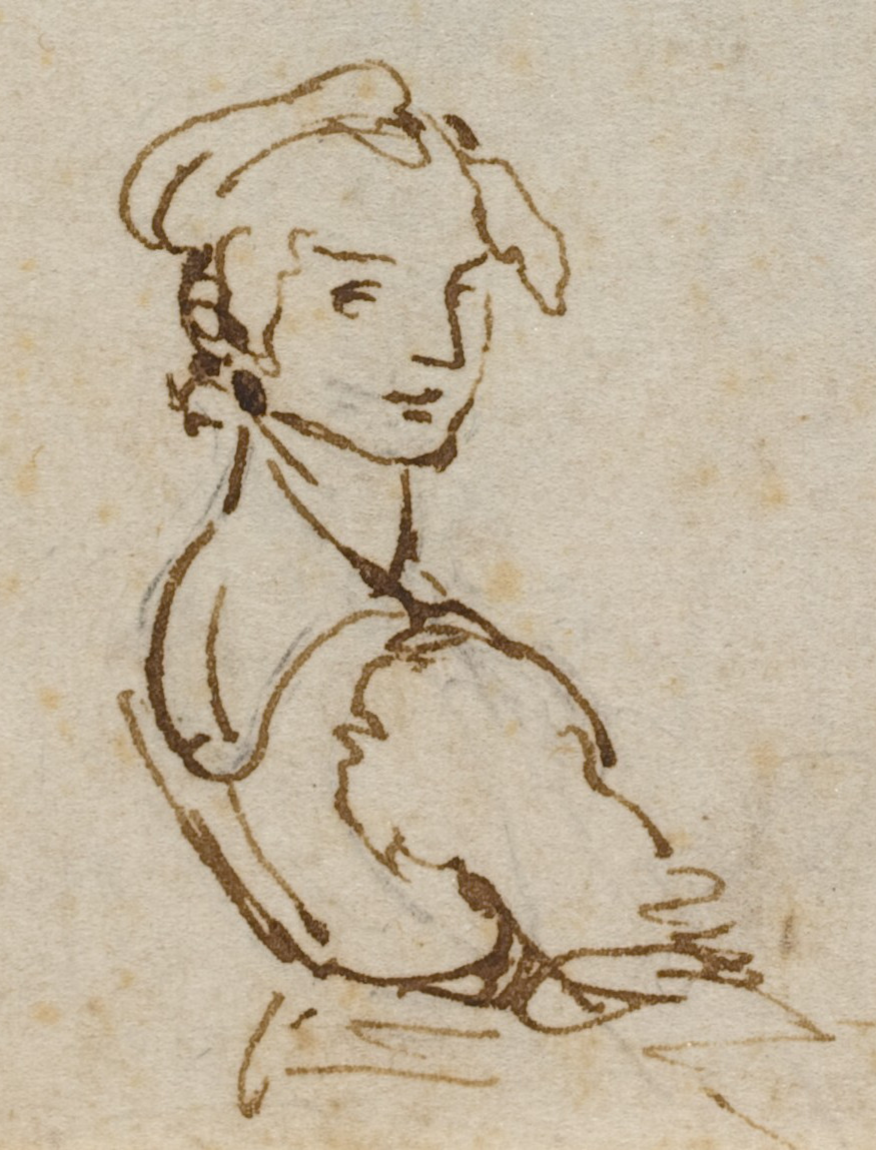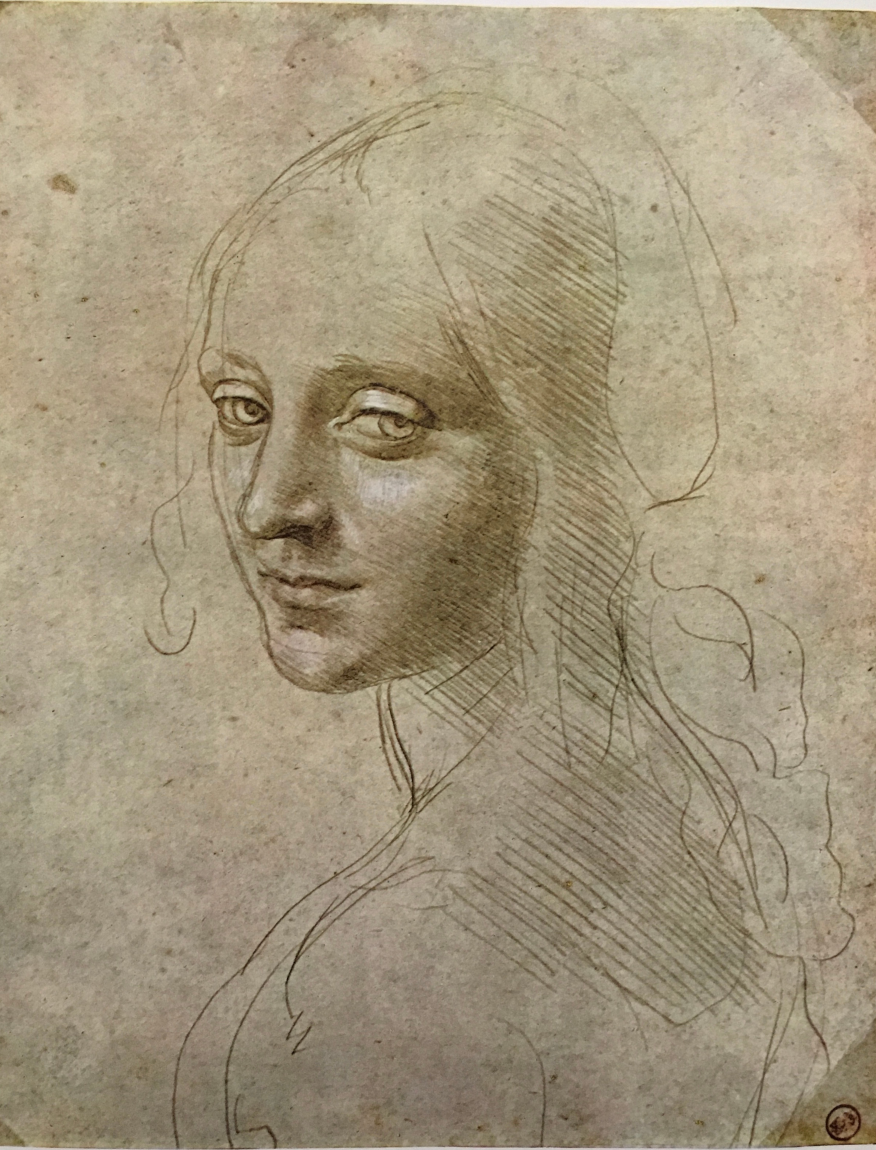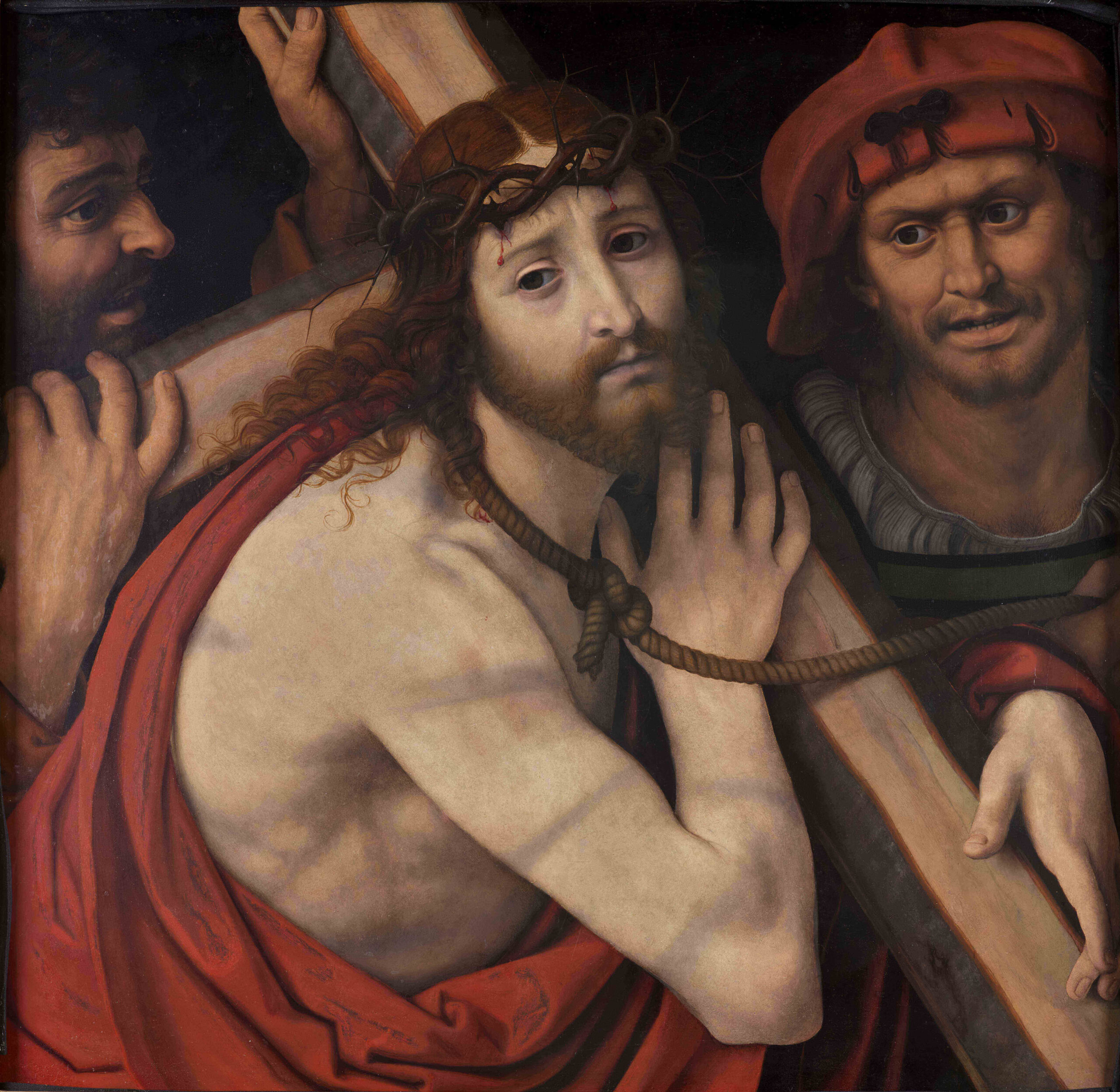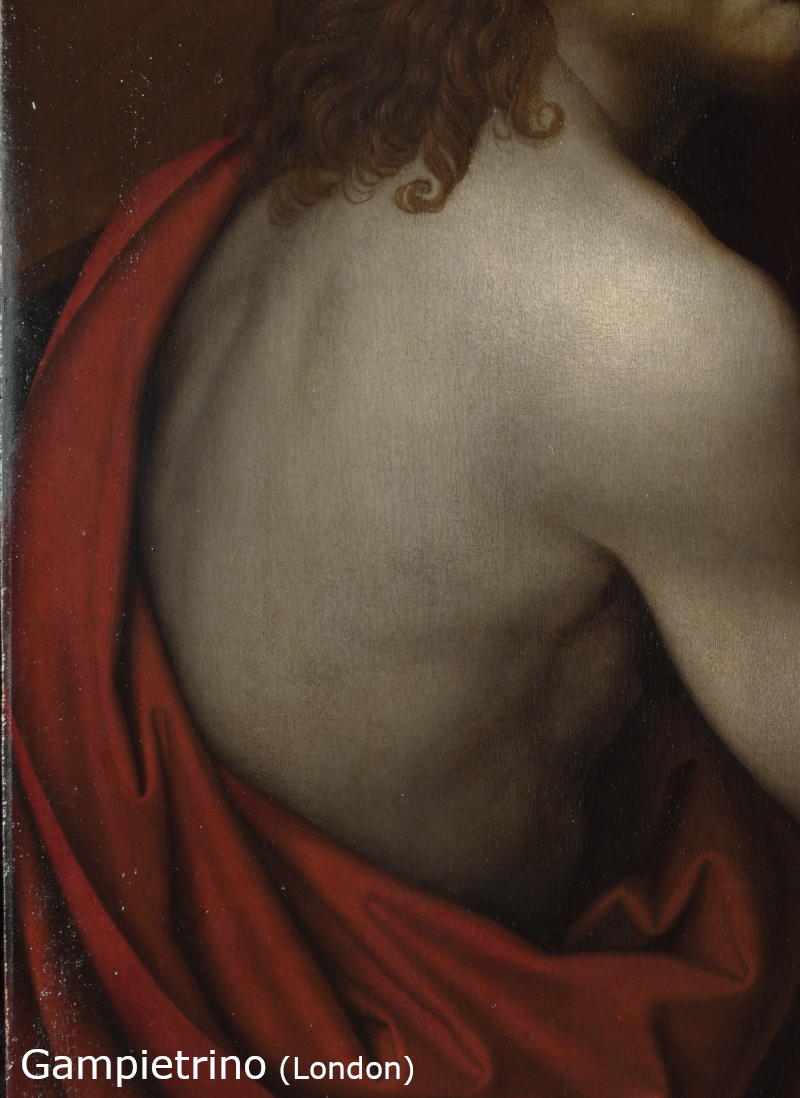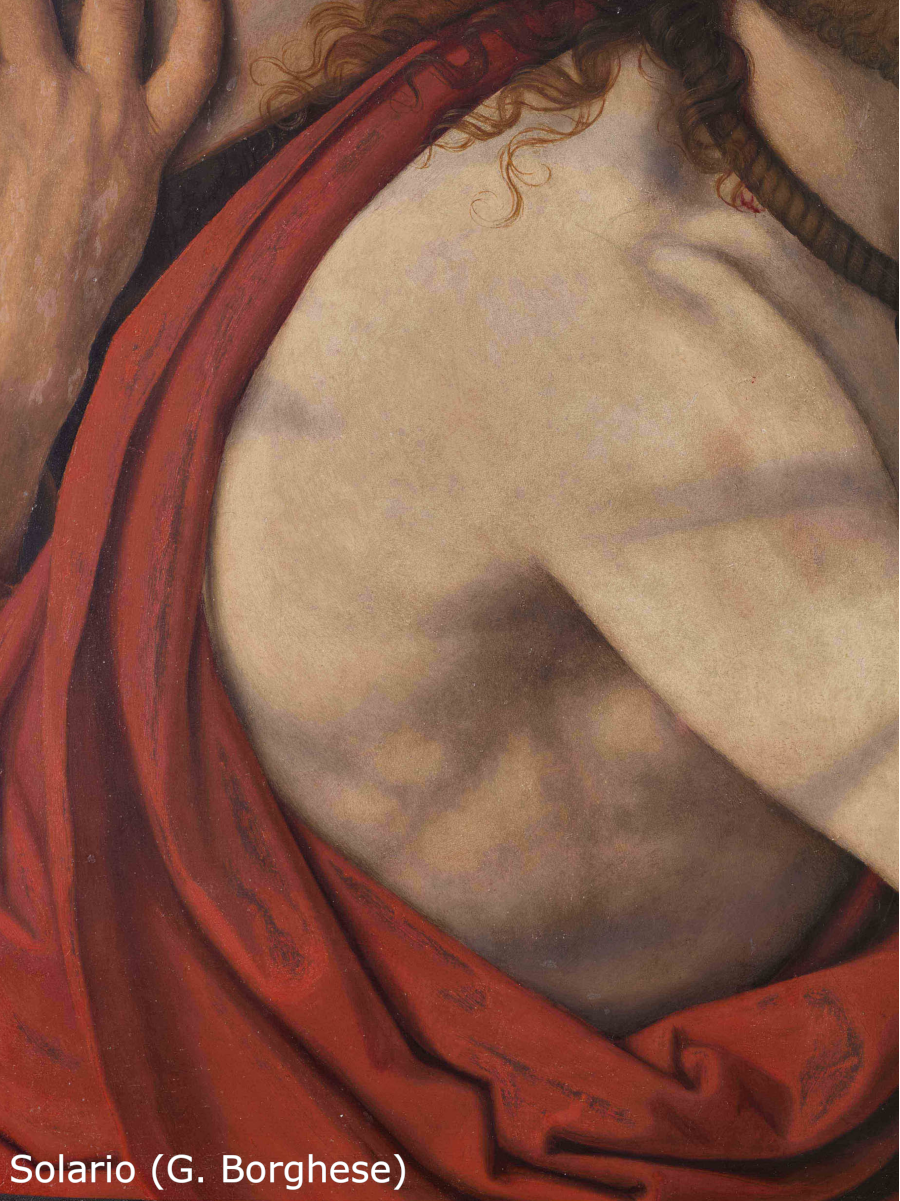1. INFLUENCE OF THE DRAWING ON THE CHRIST CARRYING THE CROSS: VENETIAN AND MILANESE PAINTERS (GIAMPIETRINO…)
Leonardo da Vinci’s Drawing of the Head of Christ, a possible source for the lost model of Christ Carrying the Cross, forms the starting point of this study. For the past century, several historians – Wilhelm Suida, Kenneth Clark, Carlo Pedretti, Pietro C. Marani, as well as the National Gallery in London – have supported this hypothesis, suggesting that the lost model may have circulated within the workshop in the form of a preparatory cartoon. These specialists do not rule out the possibility of a work by Leonardo da Vinci (see Chapter 3 of the full study Leonardo da Vinci and Christ Carrying the Cross).
This page presents a comparative study based on a corpus of works contemporary with the drawing, aiming to identify those that most directly derive from it.
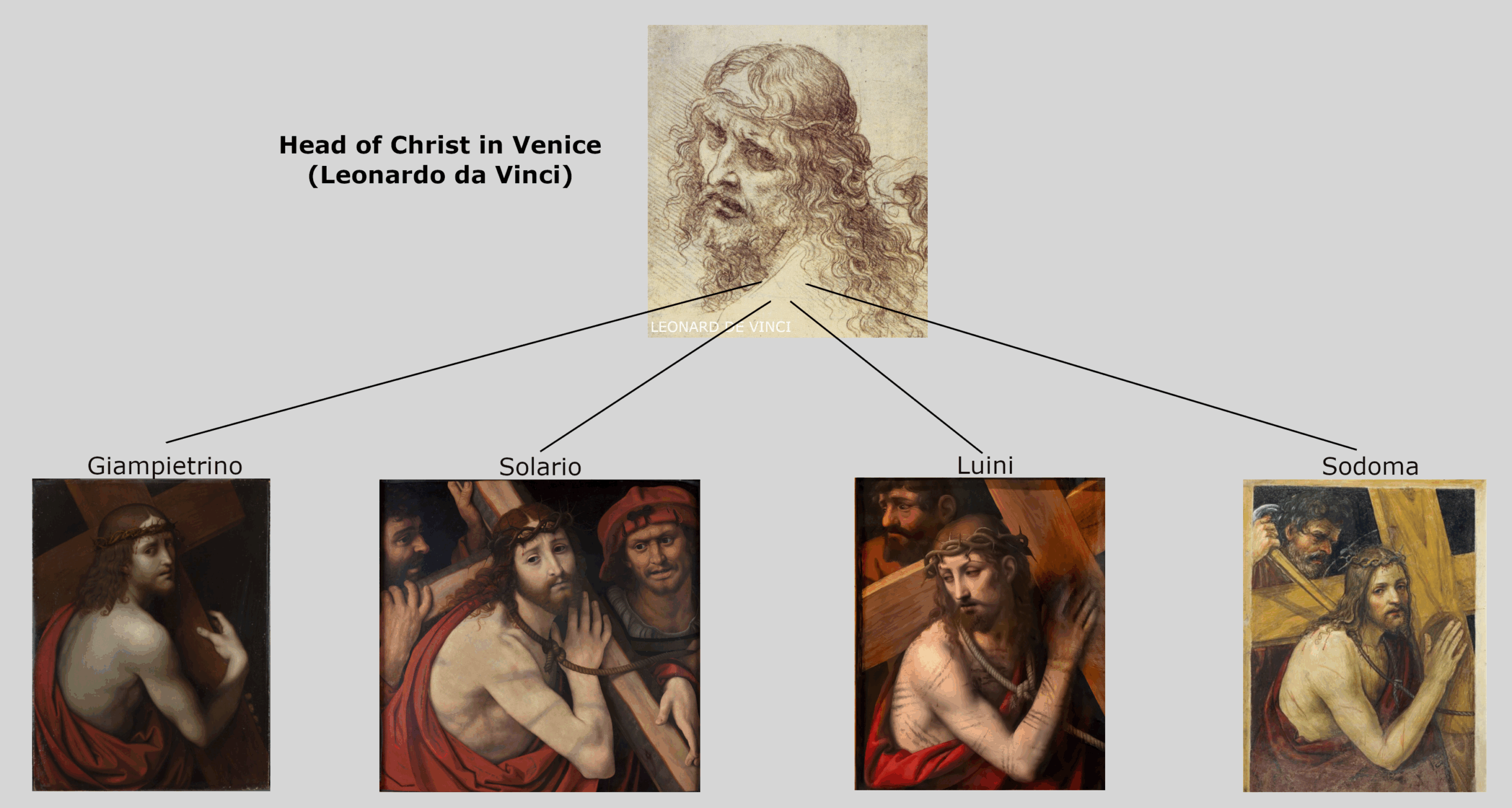
2. PAINTERS AND WORKS ANALYSED
The study examines about twenty versions of Christ Carrying the Cross, painted between 1500 and 1525 by artists of the Venetian school (Bellini, Giorgione, Titian…) and Lombard school (Giampietrino, Solario, Luini, Le Sodoma, Cesare da Sesto…).
A grid of nine stylistic and iconographic criteria
It was used to objectively assess how closely each painting relates to the Venice Drawing. These include:
-
-
orientation of Christ (ritratto di spalla)
-
head tilt
-
gaze directed at the viewer
-
crown of thorns
-
hand pulling the hair
-
forked beard
-
drapery, gestures, expression
-
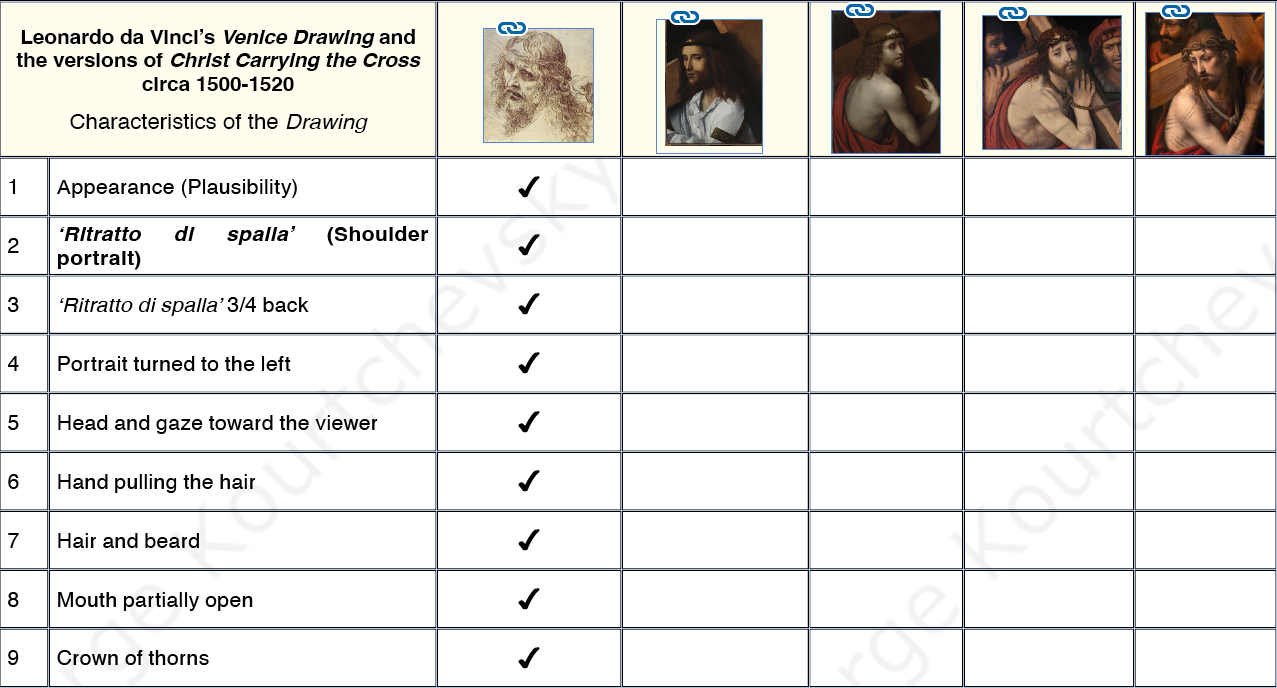
Multi-criteria analysis grid
3. THE ‘RITRATTO DI SPALLA’: A LEONARDESQUE MODEL AT HEART OF THE CHRIST CARRYING THE CROSS
Executed in the emblematic style of the Italian master, the Head of Christ Drawing from Venice displays a key feature of Leonardo’s art: the ritratto di spalla, or “shoulder portrait.” In the case of the Drawing, this Italian term refers to a portrait in which the figure, seen from three-quarters behind, turns toward the viewer over the shoulder (see Chapter 2 of the full study Leonardo da Vinci and Christ Carrying the Cross).
This distinctive posture, emblematic of Leonardo’s expressive vocabulary, is notably illustrated by the study sheet held at the National Gallery in Washington, shown here.
4. THREE WORKS STAND OUT CLEARLY
Among the paintings studied, three works stand out for their strong resemblance to Leonardo’s Christ Carrying the Cross:
-
Giampietrino – Several versions from a single model are found in London, Budapest, Turin and Milan. They faithfully reproduce the posture and head orientation seen in Leonardo’s Christ.
-
Andrea Solario (attributed) – A now-lost version from Magdeburg, known through a print by Carl Wildt, shows an inverted Christ. Nevertheless, it remains very close to Leonardo’s Christ in the shape of the head and its expression.
-
Anonymous (Castello Sforzesco) – This Milan version, attributed to Giampietrino’s circle, is the only one to show the hand pulling the hair, a key element of Leonardo’s Christ Carrying the Cross drawing.
5. GIAMPIETRINO’S MODEL: A FAITHFUL TRACE
Through digital superimposition, the outlines of Leonardo’s Drawing align almost perfectly with those of Giampietrino’s model—when the latter is reversed.
This model was reproduced in several high-quality versions, often painted on poplar panels, in keeping with the practices of Leonardo’s workshop.
Giampietrino’s works demonstrate remarkable fidelity to the Drawing: the orientation of the torso, the curve of the neck, the facial expression, and even certain folds in the garment, also found in Solario’s paintings.
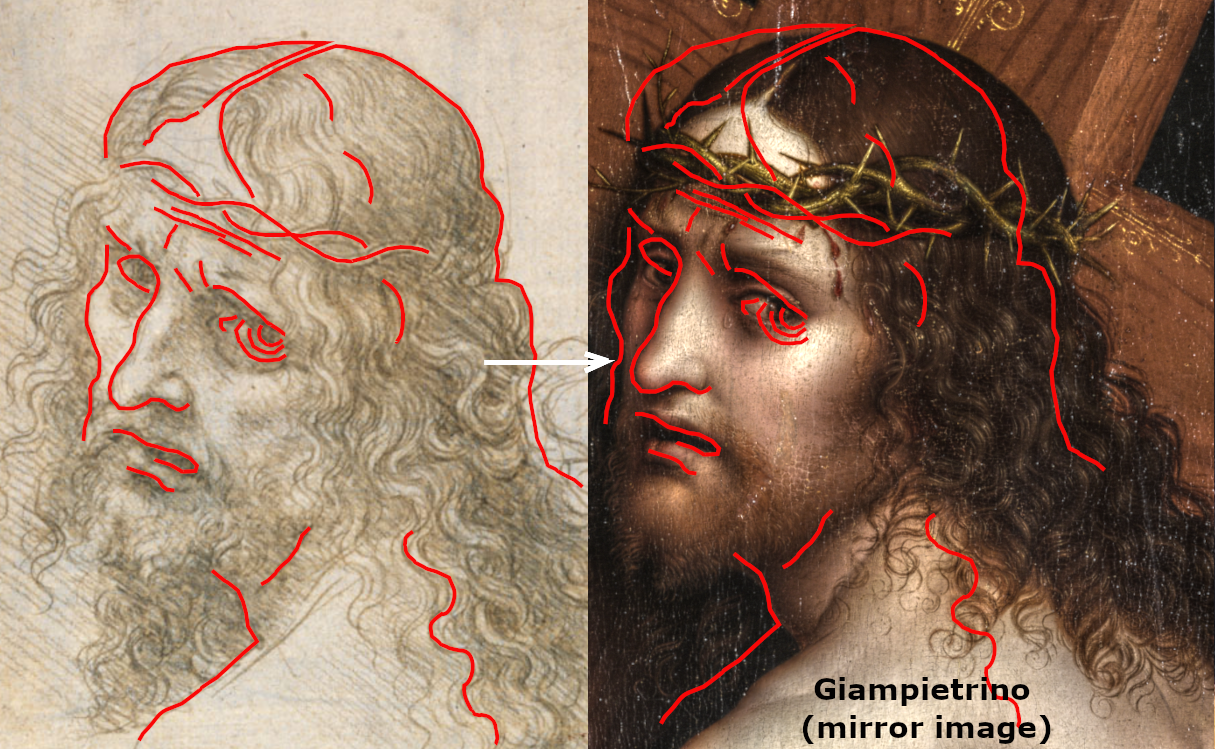
Overlay: Drawing Superimposed on Giampietrino’s Christ Carrying the Cross, Budapest (Reversed)
6. THE CONSISTENT DRAPERY STYLE FOUND IN THE WORKS OF MILANESE ARTISTS
Among Milanese artists (Solario, Giampietrino, Luini, Cesare da Sesto), as well as in the work of Sodoma, Christ is depicted wearing a red or purple robe, leaving the back partially uncovered and draped in the manner of a Roman toga.
This shared costume feature is accompanied by striking similarities, particularly in the arrangement and folds of the drapery, most clearly observable in the works of Solario and Giampietrino. These resemblances support the hypothesis of a common model, possibly inspired by prototypes conceived by Leonardo da Vinci (see Chapter 16 of the full study Leonardo da Vinci and Christ Carrying the Cross).
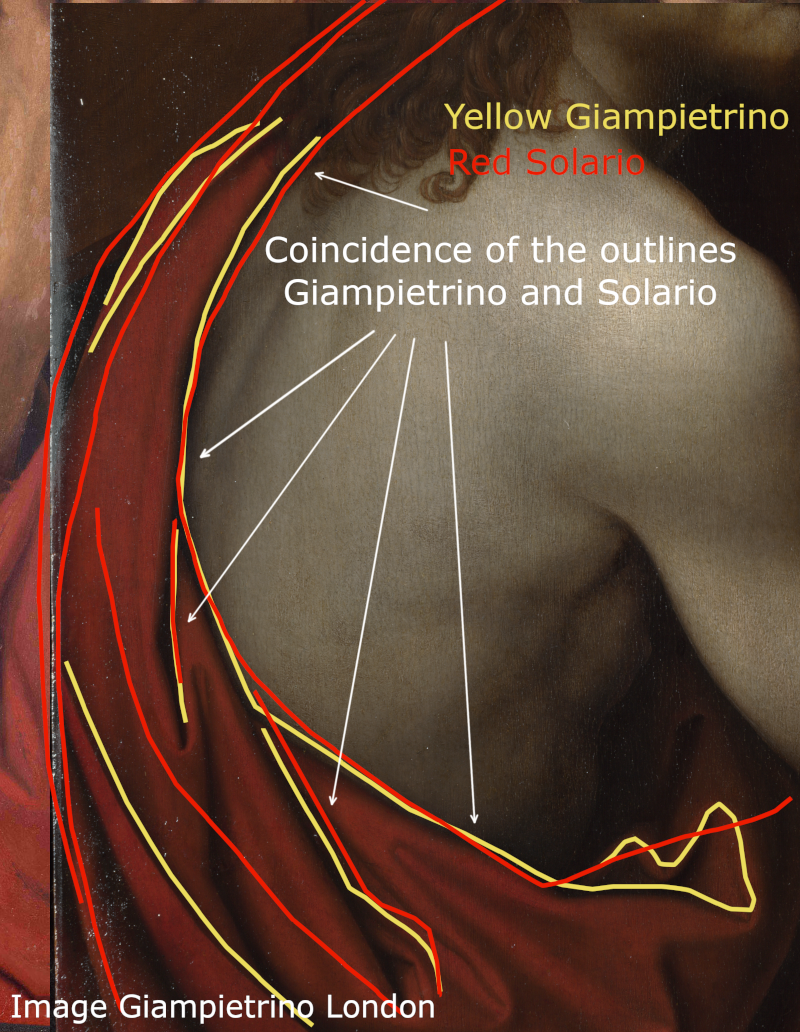
Overlay: Drapery Outline – Giampietrino and Solario
7. A TRANSMISSION FROM LEONARDO?
Concerning Giampietrino: “He preserved certain compositions by the master of which we would otherwise have only a vague—or no—idea.” — Wilhelm Suida, 1929
Everything suggests that the model used by Giampietrino derives from a lost cartoon by Leonardo.
This model was copied or reinterpreted in several Lombard workshops, where it served as a prototype for various representations of Christ carrying the cross.
TO GO FURTHER
To explore further, browse the available resources in PDF, audio, or video formats.

